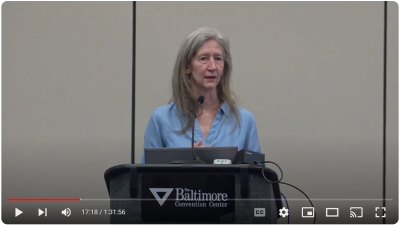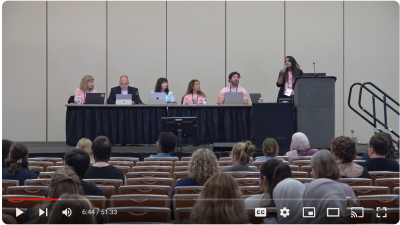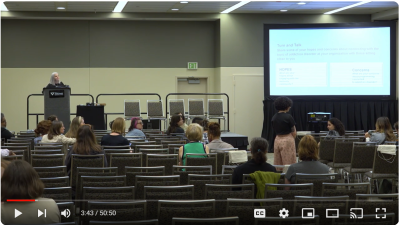
Or, “when ethics statements are not enough…”
I’m working on the agenda for a convening hosted by the Harvard Museums of Science & Culture, December 14-15, at which participants are going to try to come up with early warning systems and practical interventions for instances in which museums are being pressured to sell collections in order to balance the books.
![]() Today’s post is a heads up about this gathering: if you are interested in helping tackle this challenge, put the dates on your calendar and watch for an announcement about registration, which will open later this month. I’m hoping you will comment on, share, and tweet about this post (use this link: http://bit.ly/AAMCookieJar) to help my colleagues and me gauge how many people may be interested in attending.
Today’s post is a heads up about this gathering: if you are interested in helping tackle this challenge, put the dates on your calendar and watch for an announcement about registration, which will open later this month. I’m hoping you will comment on, share, and tweet about this post (use this link: http://bit.ly/AAMCookieJar) to help my colleagues and me gauge how many people may be interested in attending.
There is already a clear consensus in our field that it is ethically wrong to use collections as a cash reserve (raiding the “deaccession cookie jar,” as Stephen Weil dubbed it in 1992). Field-wide standards codify Weil’s position, and the field has created a framework to support nuanced, ethical decisions regarding the use of funds from deaccessioning.”
Skip over related stories to continue reading articleBut despite this consensus, every year it seems we read about a museum using or being pressured to use the sale of collections as a way to address financial needs. This happens for a variety of reasons. Some people simply disagree with the ethics standards. Some agree philosophically but feel they are faced with the choice of selling collections or closing the museum. How can we as a field provide museums with other, better choices?
That’s where this workshop comes in.
The Alliance is partnering with AAMD, AASLH, AAMG and NEMA* to bring folks together to frame out a practical toolkit that would help associations and peer institutions head off or intervene in such situations. How can our field create an “early warning system” to detect potential crises that might lead to inappropriate sales? What resources can we provide to help museums find other options to address their financial needs?
Here’s what we won’t do at this gathering: Revisit the ethical or legal strictures regarding the use of funds from the sale of deaccessioned collections. That topic was comprehensively reviewed by the Direct Care task force in 2015-2016, and continues to be addresses in sessions at various professional meetings.
Here is what we will do: Get people talking together and working together to create practical interventions that help reduce the instances of museums selling collections to meet financial needs.
We will prime our discussions with remarks from a few speakers from inside and outside the field, but the focus of this meeting will be on doing real work. Participants will split into small groups to generate ideas, and come together to share, discuss, and critique our compiled list of possible actions.
The Alliance will compile and share the outcomes of the convening—ideas for toolkits, scripts, or interventions—to help ensure museums have other, better financial options than selling collections.
See you in Cambridge?
*Association of Art Museum Directors, American Association for State and Local History, Association of Academic Museums and Galleries, New England Museum Association









This looks like a fantastic opportunity to bring into the open some of the real financial challenges that museums face and to develop ways to make it easier for museums in trouble to admit to that fact and seek solutions before they reach the deaccessioning precipice!
I look forward to listening and contributing. My questions revolve around the limits of the board's decision making. It seems to me that a process of the sort followed by the Berkshire Museum (from what I read) is exactly the sort of decision-making process required of the board, supported by the CEO. I also wonder how the AAMD practice followed on behalf of Detroit can be examined to help other museum types. Thank you for taking this on.
I am teaching this twice this fall – once as a case study in strategy and another in ethics. It will be interesting to see how my students (who are all working professionals but generally younger) respond. And to compare their reactions to the Think Tank we are doing at the NEMA conference next week. Mary is right to look to the role of the board – voices that I hope we get at NEMA. There are no easy answers to the ethics of stewardship or to the demands of sustainable management.
Wish I could be there to join this discussion. I hope it focuses on the wider need for deaccessioning from our collections. Our ethical guidelines were not intended to act as a strait jacket for museums, but they've nevertheless had a chilling effect on our field's willingness to look at collections in new ways. Fear of violating ethical standards has made museums risk intolerant, and I fear focusing on a specific example like this one only increases that phobia. Many of us have huge numbers of collections that don't support the mission filling our storage areas, but in an environment where no risk is acceptable, nothing will change. At some point we need to acknowledge the risk of not deaccessioning is greater than the risk of acting – Storerooms full of unused and unloved pieces take precious resources away from mission critical goals. Time spent by staff maintaining unused collections makes it difficult to collect materials that are meaningful to current and future audiences. If we can't come up with more streamlined methods to deaccession what doesn't support the mission, incidents like this one will continue to occur.
Hi Trevor! Thank you for commenting. I love the discussions you and Rainey and Elee are provoking through the Active Collections project. (Readers, you can find that work here: http://www.activecollections.org/)
There are many good reasons to deaccession collections–for example, the Active Collections Manifesto makes a strong case that "collections that do not advance the mission must go." However, I hope we can agree that it is less than optimal for museums to undertake deaccessioning as a short term solution to financial crises. We hope participants at the Cookie Jar convening will help come up with ways the field can provide museums facing such crises with other options. With more time, and less pressure, to arrive at well-considered solutions, museums can hopefully find ways to strengthen their financial models. This will put them in a stronger position to undertake deaccessioning that is driven by thoughtful assessment of the needs of their community, and how the collections meet those needs.